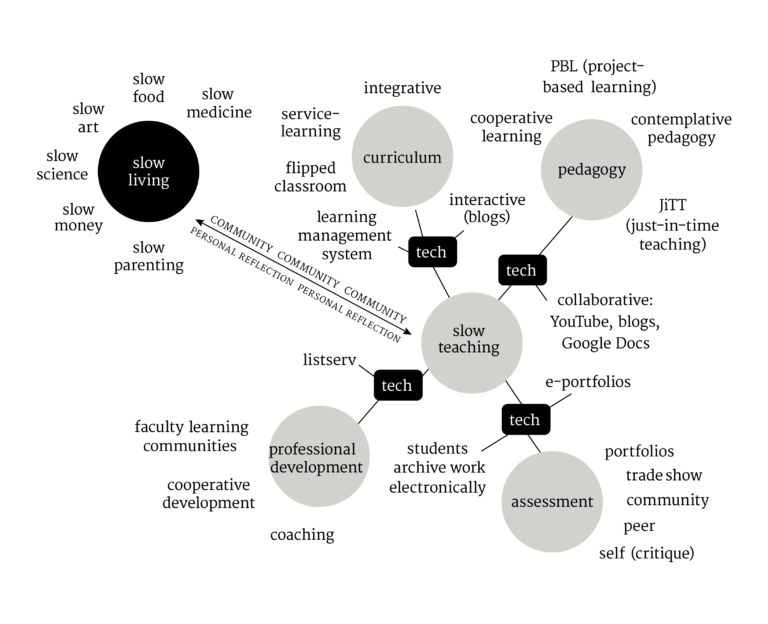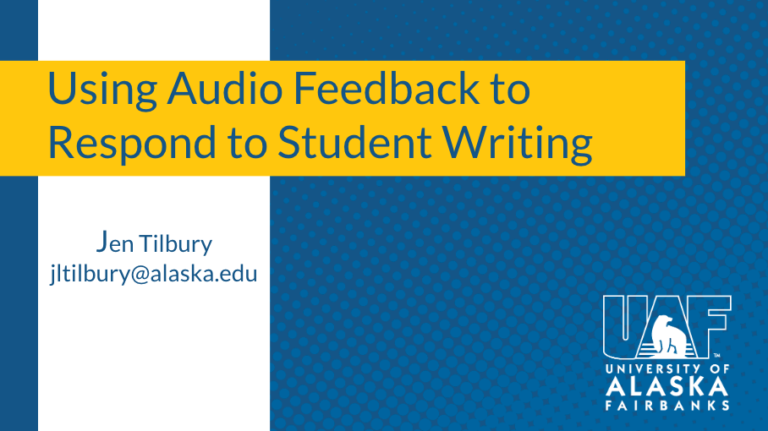
Cancel your final
It’s November, which means it’s time for students to begin stressing about finals and for faculty to begin declining mid-December plans so they can hole up and grade exams, papers and presentations. Why not give everyone a break from the stress and infuse a new sense of purpose in your final assessment?
For some students, a final is stressful not only because it requires days of studying and preparation, but also because it may involve confronting test taking and/or public speaking anxieties. Too often, by asking students to perform, we inadvertently end up assessing the performance instead of the learning conveyed in it. Research shows that this dynamic is especially true for — and further disadvantages — underrepresented students in our disciplines and classrooms (Ballin & Cotner). Education scholar Kevin Gannon asks, “Is a traditional final exam the best way to assess if, what, and how much learning has occurred? Or is it a practice that reflects older ways of thinking – which equated student learning with academic performance? Is it sustained more by inertia than pedagogical value?“
Of course, there may be pedagogical value in how you’ve structured your final. If an explicit purpose of your course is to teach public speaking and professional presentation, students ought to have the opportunity to perform and get feedback on that performance. But if the performance piece is no more than good practice that’s not otherwise scaffolded in the course, it might be time to think about alternatives.
Alternatives
There are, of course, endless alternatives to the traditional final exam/paper/presentation. Anthony Crider, physics professor at Elon University, suggests “an epic finale,“ to include role-playing, real-world problem-solving, and other approaches to active learning that might inspire continued inquiry for students as they close out the semester. But you need not completely redesign your final; by simply tweaking what you have according to the principles below, and giving students more choice in how they demonstrate their learning, you could shift November’s anxiety into December’s creative process.
1. Switch the audience.
Instead of having students write a research paper for you, consider asking for a research-based op-ed, conference proposal, or grant application. If they’re doing presentations, invite a colleague from a relevant industry or community organization to join and give students feedback from their perspectives. In short, create a real-world scenario that allows students to imagine an audience other than you for their work and prepare to be surprised by the new ideas that emerge.
2. Create a resource for future use.
Is there a chapter in your course textbook that you always have to augment or teach around? Other resources that you wish you had time to create for the course? Invite the students who’ve just been through it to demonstrate their mastery by creating resources for you to use the next time you teach. They might submit revisions to a chapter (or section) of the textbook, create an annotated bibliography of supplementary reading, or develop interactive or multimedia teaching resources.
3. Expand the media!
Instead of limiting students to a paper or presentation, invite them to create videos, infographics, digital stories or animations as a way of sharing their learning. For a student who struggles with public speaking, a video-recorded option may be an excellent option.
Not sure what direction to go? Invite your students to propose “alternatives to the final.“ You might offer extra credit or exemption from another assignment for any student whose proposal is accepted, provided they help you design not only the assignment but the assessment rubric as well. For more ideas on how to assess student work when it doesn’t fit neatly into the mold of what we’re used to, check out the Association of American Colleges and Universities’s Value Rubrics.
Oftentimes we think of these final presentations as either a chance for students to practice synthesis of course content and/or for students to become an expert in a particular area of course content. Both of these outcomes are empowering to students who succeed in the designated form of assessment — and haunting for those who don’t. The key thing to remember as you explore alternatives to the final is that giving students choice is the best way to build equity into a final assessment. Students are more likely than you are to know what sort of assessment will best allow them to demonstrate (and even grow!) their learning.
References
Ballen, C. and Cotner, S. “Can mixed assessment methods make biology classes more equitable?“ https://journals.plos.org/plosone/article?id=10.1371/journal.pone.0189610
Crider, A. “Final Exams or Epic Finales?“ Chronicle of Higher Ed.
Gannon, K. “What Is the Purpose of Final Exams, Anyway?“ Chronicle of Higher Ed.
https://www.chronicle.com/article/What-Is-the-Purpose-of-Final/245127

Kendell Newman Sadiik
Associate Director of Transformative Teaching
Instructional Designer
LION Liaison



